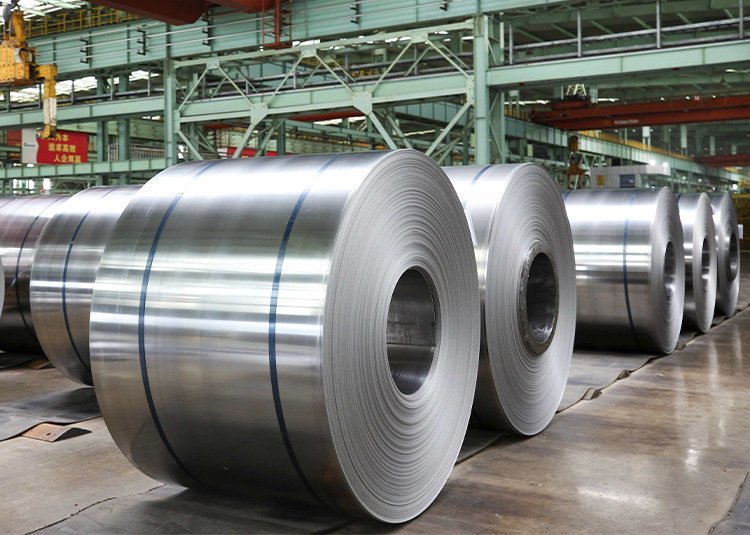China is the largest stainless steel consumer, driven by rapid urbanization, infrastructure projects, and manufacturing. Its construction, manufacturing, and export industries heavily demand stainless steel, making China the global leader in both production and consumption.
Introduction to Stainless Steel and Its Importance
What is Stainless Steel?
Stainless steel is a versatile and corrosion-resistant alloy primarily composed of iron, chromium, and nickel. The addition of chromium is key, as it forms a passive layer of chromium oxide on the steel’s surface, preventing rust and corrosion. This unique property makes stainless steel ideal for applications requiring durability and resistance to harsh environments.
Stainless steel is available in various grades and types, each tailored to specific applications. The most common grades include:
- Austenitic Stainless Steel (e.g., 304, 316): Known for excellent corrosion resistance and formability, widely used in kitchenware, medical devices, and chemical processing equipment.
- Ferritic Stainless Steel (e.g., 430, 409): Magnetic and resistant to stress corrosion, typically used in automotive exhaust systems and industrial equipment.
- Martensitic Stainless Steel (e.g., 410, 420): Hardenable by heat treatment, providing high strength and wear resistance, commonly used in cutlery and surgical instruments.
- Duplex Stainless Steel: Combines the properties of austenitic and ferritic stainless steels, offering superior strength and resistance to stress corrosion cracking, often used in oil and gas industries.
Applications of Stainless Steel Across Industries
Stainless steel’s combination of strength, durability, and corrosion resistance has made it a material of choice across numerous industries. Its applications are vast, touching everything from infrastructure to consumer goods.
Construction Industry: Stainless steel is a critical component in building and construction, used in structural elements, facades, and roofing due to its longevity and resistance to environmental factors.
Automotive Industry: Stainless steel is extensively used in the automotive sector, particularly in exhaust systems, fuel tanks, and increasingly in electric vehicles, where its lightweight and corrosion-resistant properties are valued.
Household Goods: In homes, stainless steel is ubiquitous, found in kitchen appliances, cookware, and cutlery. Its aesthetic appeal and ease of cleaning make it a preferred choice for household items.
Stainless steel’s versatility ensures its continued demand across these and other sectors, making it indispensable to modern industry.
Global Consumption of Stainless Steel
Major Consuming Regions
Asia-Pacific: The Asia-Pacific region, led by China, is the largest consumer of stainless steel globally. This dominance is driven by rapid industrialization, urbanization, and the expansion of key industries such as construction and manufacturing. China, in particular, has become a global powerhouse in both the production and consumption of stainless steel, supporting its vast infrastructure projects and export-driven economy.
Europe and North America: While not as dominant as Asia-Pacific, Europe and North America are significant consumers of stainless steel. These regions rely on stainless steel for advanced manufacturing, automotive production, and high-end construction projects. The focus on sustainability and innovation in these markets also drives the adoption of stainless steel in new and emerging applications.
Other Regions: Emerging markets in Latin America, the Middle East, and Africa are gradually increasing their consumption of stainless steel, driven by infrastructure development and growing industrial bases. Although these regions currently consume less than Asia-Pacific, their growth potential is significant.
Industry-Specific Consumption
Construction Industry: Stainless steel is a cornerstone material in construction, valued for its strength, durability, and aesthetic appeal. It is used extensively in structural components, bridges, and public infrastructure, where its resistance to corrosion and low maintenance requirements offer long-term cost savings.
Automotive Industry: In the automotive sector, stainless steel is crucial for producing exhaust systems, catalytic converters, and body panels. The rise of electric vehicles has further spurred demand for stainless steel, as manufacturers seek lightweight, corrosion-resistant materials that enhance vehicle efficiency.
Consumer Goods: Stainless steel is a staple in consumer goods, from kitchen appliances to personal care items. Its durability, ease of cleaning, and resistance to staining make it ideal for products that require both functionality and aesthetic appeal.
China – The Largest Consumer of Stainless Steel
Overview of China’s Stainless Steel Market
China stands as the world’s largest consumer and producer of stainless steel, accounting for a significant portion of global demand. This dominance is fueled by the country’s rapid urbanization, extensive infrastructure projects, and its position as the world’s manufacturing hub. China’s vast construction industry and large-scale production of consumer goods contribute heavily to its stainless steel consumption.
Key Industries in China Driving Stainless Steel Demand
Construction and Infrastructure: China’s ongoing urbanization and infrastructure expansion, including high-speed rail networks, bridges, and skyscrapers, drive massive demand for stainless steel. The material’s durability and resistance to environmental stress make it ideal for these large-scale projects.
Manufacturing Sector: As the world’s manufacturing center, China’s factories consume vast amounts of stainless steel to produce a wide range of goods, from electronics to machinery. The emphasis on quality and long-lasting materials in manufacturing ensures continued high demand for stainless steel.
Exports: China’s export-driven economy also plays a crucial role in its stainless steel consumption. As a leading exporter of goods globally, the need for stainless steel in producing export goods—ranging from household items to industrial equipment—is substantial.
